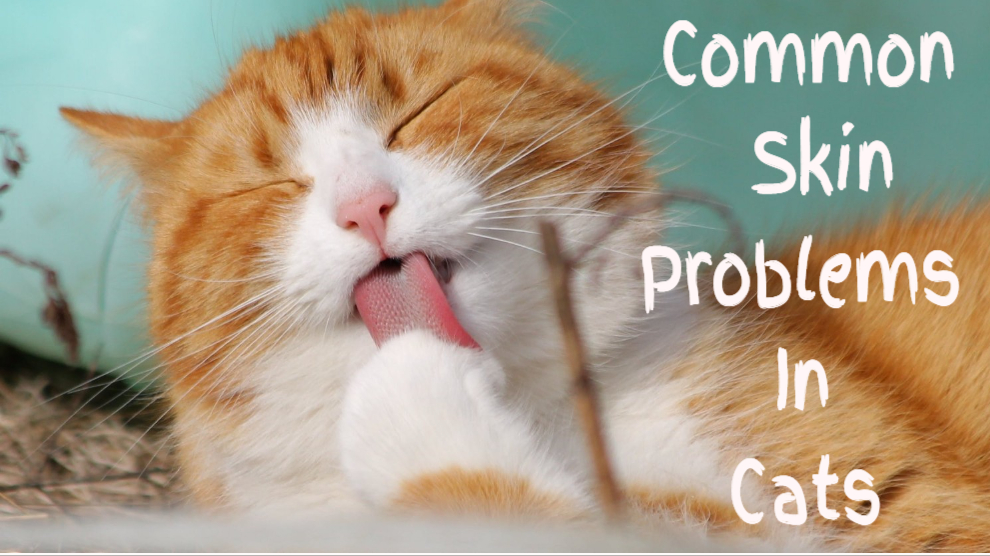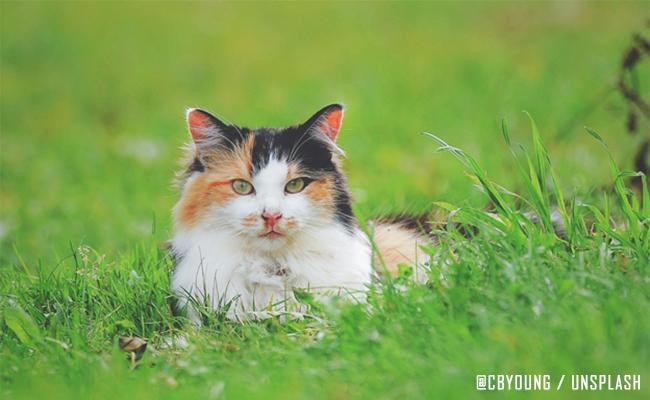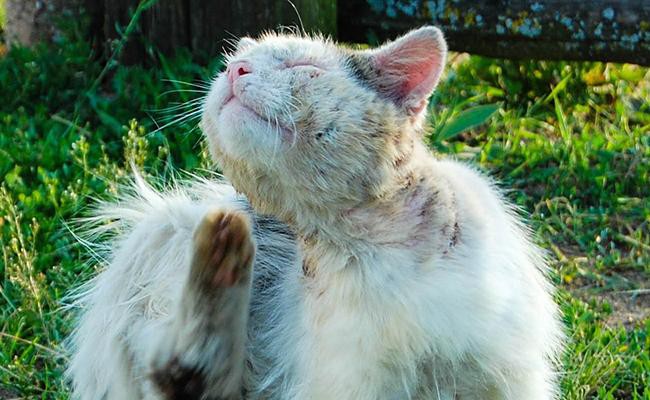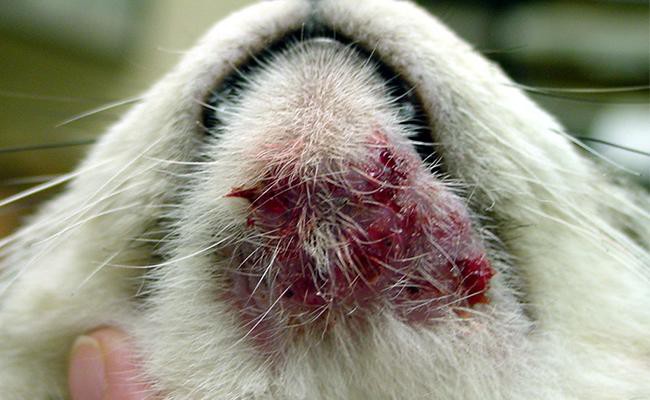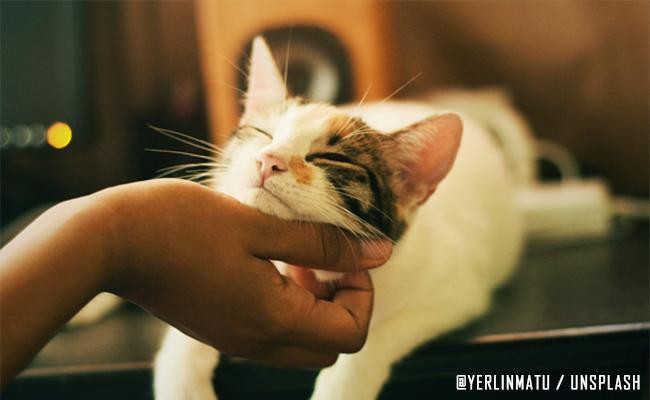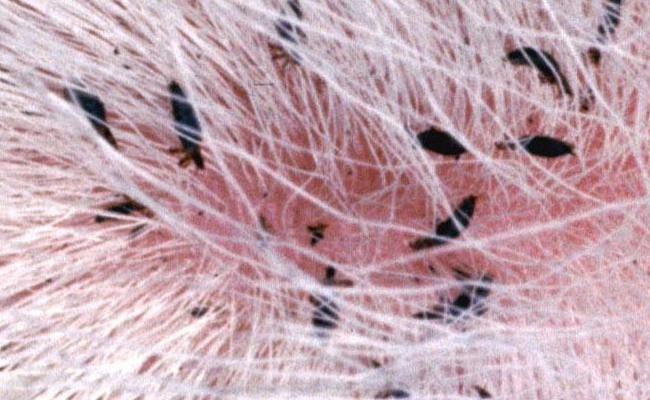Cat Pregnancy Calculator And Timeline
Skin is the largest organ of the cat’s body. It acts as a natural barrier and protects the cat’s body from a lot of invading agents.
Skin also plays a significant role in the temperature regulation of the cat’s body (osmoregulation). It has been observed that skin problems are quite common in cats. There are a variety of skin conditions in cats with a diverse range of symptoms.
Here, we will discuss some critical skin problems in cats under the light of scientific literature.
There is a wide range of diseases that affect the cat’s skin. For better understanding, we have divided the skin problems into the following categories:
- Parasitic skin problems- Due to external parasites such as mites, fleas, mosquito bites; bacteria, fungi, and viruses also induce several infectious skin conditions in cats
- Food induced skin problems- Due to an allergic food or food intolerance: food-borne
- Environmentally induced skin problems- Due to environmental irritants/pollutants, pollen grains, etc.
- Product/medication-induced skin problems- Due to an allergic reaction to grooming product or any medicines
- Trauma induced skin problems- Due to any traumatic injury, accident, fight, etc.
According to a research study conducted at Cornell University (College of veterinary sciences), New York, the most common skin conditions in cats occur due to food allergies, external parasites (mites, fleas, lice, etc.), and air-borne irritants/pollutants.
In Canada and the UK, the most common skin problems are abscesses, which is an accumulation of pus.
Factors Affecting The Occurrence Of Skin Problems In Cats
Many factors affect the incidence of skin problems in cats. Some important ones have been listed below:
- Cat breed – Himalayans cats are more susceptible to get skin problems than other cat breeds
- Gender – Males are more prone to get skin abscess inflicted due to fighting with others due to their aggressive behavior
- Living conditions/lifestyle – Indoor cats living in hygienic environments are less likely to get skin diseases than outdoor cats; External parasites (fleas, mites) attack outdoor cats more frequently as compared to indoor cats.
- Immune status – Immunocompromised cats–having impaired immune systems are more likely to get skin infections/diseases than immunocompetent cats
Key Signs And Symptoms
Cats show various signs and symptoms, according to the nature and severity of skin disease. But some general vital characteristics have been identified for better diagnosis and evaluation:
- Erythema (redness and swelling of the skin)
- Alopecia (loss of hair/fur, clearly seen bald patches on the cat’s skin)
- Frequent scratching and itching
- Excessive grooming/chewing of fur
- Head shaking (might be due to ear mites)
- Flaky/scaly skin, bumps can also be seen on a cat’s skin
- Anorexia and dullness
- Presence of fleas, ticks on the skin
- Presence of blackheads on the cat’s skin, especially chin (feline acne)
- Irritated and aggressive behavior
Dermatophytosis
This is a prevalent skin condition in cats. It is more commonly known as “Ringworm”.
Cause
This skin problem is caused by a fungus (Microsporumspp). This fungus infects skin around the nails and outermost layers of skin.
* Microsporumcanis is notorious among all species that infect cats, dogs, and humans. This is a zoonotic pathogen.
Signs
- Loss of hair (usually patchy hair loss on the whole body).
- Thickened skin around the nails.
- Circular lesions may be seen on the ears, head, limbs, or any other body part
- Scaly, red (inflamed) patches on the skin, which aren’t constantly being scratched by the cat
Diagnosis & treatment
The diagnosis of ringworm lesions can be hard to find in cats. It is recommended to contact a registered pet dermatologist or veterinarian if you see anything abnormal on your cat’s fur or skin.
Treatment includes better management and the use of topical antifungal shampoos and preparations. Your vet can also suggest systemic antifungal medications, depending upon the severity of the condition.
Keep the living environment of your cat hygienic. Thoroughly clean their drinking and feeding equipment, as fungal spores can remain there and cause infection.
Flea Infestation
Fleas are tiny, external parasites that feed on blood. Flea infestation is common in cats.
Signs
Vital signs of flea infestation include hair loss, thinning of hair around the tail’s base, frequent scratching, redness/inflammation, and crusty skin lesion.
Diagnosis & treatment
Your vet will diagnose fleas by spotting them on your cat’s skin. Treatment includes anti-flea medications and shampoos. Take care of the living environment of your furry friend, as these pests can end up on your skin as well. Provide your cat with a nutritious diet.
Regular grooming of cats also helps control external parasites such as fleas, mites, ticks, and lice. Also, according to The Pets advice, it is necessary to repeat the treatment for several months to ensure that fleas hatching from any laid eggs are killed.
Feline Acne
This is another devastating skin disease that affects several areas of a cat’s skin but most commonly the chin (chin acne).
Causes
There are multiple causes of feline acne. The most common reasons have been given below:
- Bacterial infection or due to any other underlying skin condition
- Anxiety and stress
- Poor nutrition
- A side effect of medication
- Plastic feeding bowls
Signs
An essential key characteristic of feline acne is blackheads forming on the chin or any other areas and hair loss.
Diagnosis & treatment
Contact a veterinary dermatologist. An expert will suggest anti-acne shampoos and medications clear up the condition. Antibiotics can also be prescribed if acne is due to any bacterial infection.
NOTE: A cat’s hair follicles become more susceptible to bacteria invading when they have acne. Bacteria can cause several infections, but folliculitis (inflammation of hair follicles) is an important one.
Being a responsible owner, you should not use plastic drinking or feeding bowls for your cat. Keep your feline friend’s living environment stress-free. Provide high-quality nutrition to your cat.
Allergic Dermatitis
Dermatitis refers to the inflammation of the cat’s skin. This may occur due to any reason, but allergic dermatitis is very common in cats.
Causes
There are many causes of allergic dermatitis in cats. Some essential reasons have been enlisted below:
- Environmental pollutants/irritants
- Pollen grains allergy
- Flea bites
- Food intolerance/allergy
- Allergic reaction caused by medication
* Itchy face is usually observed in food allergies in cats.
Signs
Key signs include loss of hair, redness/swelling of the skin, patchy areas and skin lesions (especially on the belly region), scratching/itching neck, ears, and head.
Diagnosis & treatment
Contact your veterinarian if your cat shows any of these signs. A vet can suggest several medications to soothe the scratching/itchiness and provide anti-allergic formulations.
Try giving your cat a hypo-allergic diet. If your cat shows an allergic response to a diet, it is better to stop feeding that particular diet to your cat.
Avoid exposing your cat to environmental allergens/irritants etc.
Ear Mites Infestation
This condition is also commonly seen in cats but occurs most frequently in kittens.
Signs
Key signs include head shaking, irritation, persistent scratching of the ear, dark discharge with foul odor from one or both ears, and redness on the ear’s outer part.
Diagnosis & treatment
Your vet will diagnose the ear mites based on a thorough otoscopic examination. Treatment includes topical preparations and different commercially available products used to control mites. Take suggestions from your vet if you find any of the above symptoms in your cat.
NOTE: Ear mites are contagious, and they can infect other pets too.
Lice Infestation
Lice are external, blood-feeding parasites. They cause low growth and stress in cats.
Signs
Essential signs include poor coat, irritation, discomfort, excessive scratching, and anemia, due to blood deficiency.
Diagnosis & treatment
Generally, lice infestation occurs in young and unhygienic cats. A diagnosis is made on a simple examination and the presence of lice on the different body parts.
Treatment includes anti-lice shampoos and other topical solutions. Keep the living area of your feline neat and clean. Regularly groom and take care of the overall hygiene of your cat.
Other Important Conditions
There are some other essential skin conditions which have been enlisted below:
- Skin tumors – Usually found in older cats; a lump on the skin that doesn’t spread to other parts of the body, if benign; localized, sometimes require surgical intervention
- Dandruff/dry skin – Dandruff is a fungal infestation controlled by using anti-dandruff shampoos/preparations. Dry skin occurs in the winter season mostly. Give omega-3 fatty acid supplements to your cat for better skin and coat development; take care of your feline friend’s proper grooming and hygiene
- Eosinophilic granuloma – Usually raised lesions/ulcers occur on the lips and nose of cats or this allergic reaction can occur on any part of the body. Bacterial infections or any food allergen are considered the causative agent of this specific skin condition.
- Alopecia – Hair shedding or pruritus
- Yeast infections
Important Diagnostic Tools
It can be challenging to precisely diagnose the skin condition in cats; however, there are diagnostic tools that can help provide a better understanding of the problem:
- Skin biopsy – Taking a small part of the skin and observing it from the live cat. Local anesthesia must be given to the cat before performing a skin biopsy
- Skin culture – Primarily used to diagnose bacteria, fleas, mites, etc.
- Direct microscopic examination – Taking a part of skin or exudates from the ear/any part of the body and examining it directly under the microscope
- Allergy testing – Especially to figure out the allergic reaction
- Fungal culture – Usually in case of ringworm and other fungal infections for better understanding and selection of an effective antifungal agent

